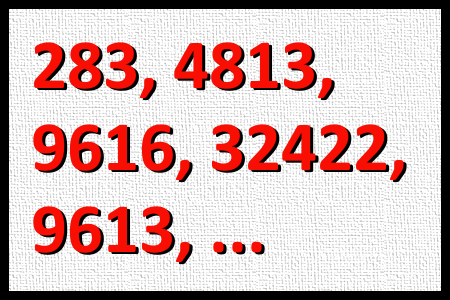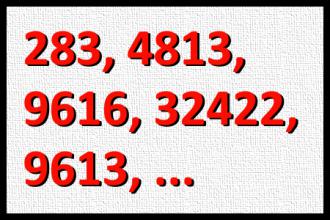What is the next number in the sequence?
What is the next number in the sequence (283, 4813, 9616, 32422, 9613, ...)?
Did I say he was dead?
A 60-year-old man went to a doctor for a check-up. The doctor told him, "You're in terrific shape. There's nothing wrong with you. Why, you might live forever; you have the body of a 35-year-old. By the way, how old was your father when he died?"
The 60-year-old responded, "Did I say he was dead?"
The doctor was surprised and asked, "How old is he and is he very active?"
The 60-year-old responded, "Well, he is 82 years old and he still goes skiing three times a season and surfing three times a week during the summer."
The doctor couldn't believe it! So he said, "Well, how old was your grandfather when he died?"
The 60-year-old responded again, "Did I say he was dead?"
The doctor was astonished. He said, "You mean to tell me you are 60 years old and both your father and your grandfather are alive? Is your grandfather very active?"
The 60-year-old said, "He goes skiing at least once a season and surfing once a week during the summer. Not only that," said the patient, "my grandfather is 106 years old, and next week he is getting married again."
The doctor said, "At 106 years why on earth would your grandfather want to get married?"
His patient looked up at the doctor and said, "Did I say he wanted to?"

